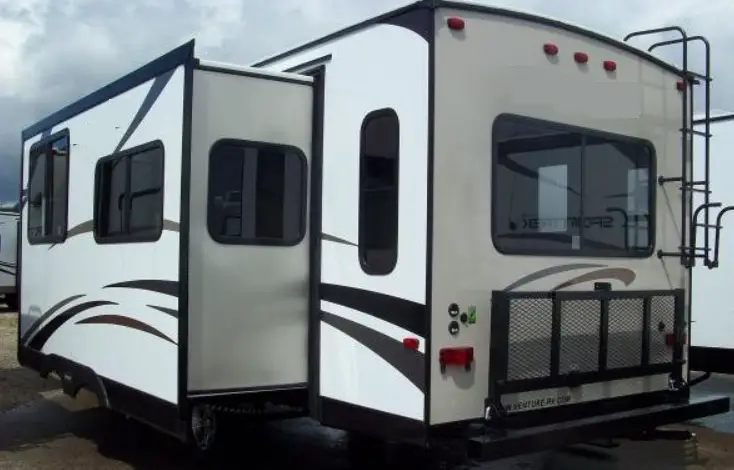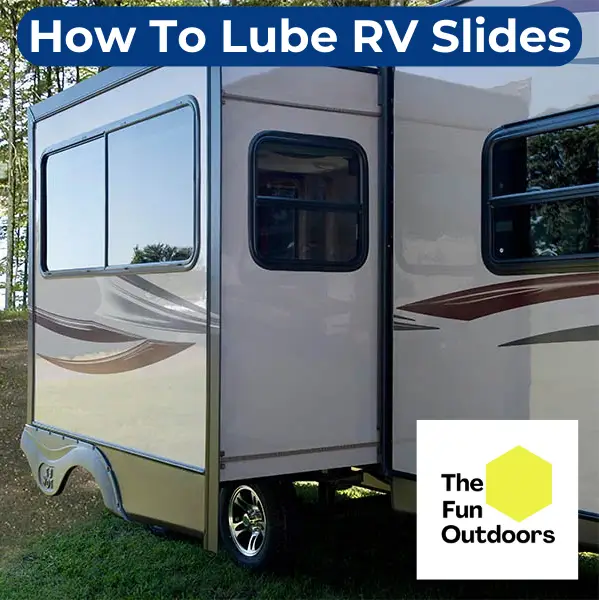As an avid RV enthusiast, I have learned that proper maintenance is key to ensuring the longevity and functionality of your RV. One essential aspect of RV maintenance is knowing how to lube RV slides. In this article, I will provide you with a step-by-step guide on how to lubricate your RV slide-outs and explain the importance of doing so.
Key Takeaways
- Proper maintenance of RV slide-outs is essential to ensure their longevity and functionality.
- Different types of RV slides require different lubricants, and it is crucial to choose the right one.
- Regular lubrication of RV slide-outs can prevent costly repairs and prolong the lifespan of your RV.
The Importance of Lubricating RV Slides

As an avid RV enthusiast, I know firsthand the importance of keeping your RV in tip-top shape. One of the most crucial maintenance tasks that you should never overlook is lubricating your RV slides.
Not only does proper lubrication keep your slides operating smoothly, but it also prevents costly repairs down the road.
Neglecting this simple task can lead to a variety of problems, including misaligned slides, damaged gears, and even complete slide failure.
Trust me, you don’t want to be stuck with a slide that won’t budge when you’re trying to enjoy your vacation.
Different Types of RV Slides
When it comes to RV slides, there are four main types: rack and pinion, hydraulic, cable, and Schwintek.
Each type has its own unique characteristics and maintenance requirements. In this section, I will give you a brief overview of each type.
Rack and Pinion Slides
Rack and pinion slides are the oldest and most reliable type of RV slide system. They use a gear and track mechanism to move the slide in and out.
These slides require regular lubrication to keep the gears functioning properly. I recommend using a dry silicone-based lubricant for this type of slide.
Hydraulic Slides
Hydraulic slides use a hydraulic pump to move the slide in and out. They are typically found on larger RVs and require a bit more maintenance than other types of slides.
The hydraulic fluid should be checked regularly and topped off as needed.
It’s also important to keep the hydraulic lines and fittings clean and free of debris.
Cable Slides
Cable slides use steel cables to move the slide in and out. They are less common than other types of slides but can still be found on some RVs.
The cables and pulleys should be lubricated regularly to prevent wear and tear. I recommend using a dry or dry silicone-based lubricant for this type of slide.
Schwintek Slides
Schwintek slides are becoming more and more popular in the RV industry. They use a track and motor system to move the slide in and out. These slides require little maintenance but should still be lubricated regularly. I recommend using a dry silicone-based lubricant for this type of slide.
Step-by-Step Guide to Lubricating RV Slides
Lubricating your RV slides is an essential part of RV maintenance. It can help prevent corrosion, ensure smooth operation, and extend the life of your RV’s moving parts and mechanisms. In this guide, I will take you through the step-by-step process of lubricating your RV slides.
Cleaning the Slides
Before you can lubricate your RV slides, you need to clean them. Here’s how:
- Start by retracting the slide-outs completely.
- Use a soft bristle brush or sponge to remove any dirt, debris, or grime from the slide-out rails and mechanisms.
- Wipe the rails and mechanisms dry with a clean, dry cloth.
- Apply a rubber seal conditioner to the rubber seals, if applicable.
Applying the Lubricant
Now that your RV slides are clean, it’s time to lubricate them. Follow these steps:
- Choose a dry or dry silicone-based slide-out lubricant.
- Put on protective gloves to avoid getting the lubricant on your skin.
- Spray the lubricant onto the slide-out rails and mechanisms.
- Use a clean, dry cloth to spread the lubricant evenly over the rails and mechanisms.
- Wipe away any excess lubricant with a clean, dry cloth.
Checking for Proper Functioning
Once you’ve lubricated your RV slides, it’s important to check that they are functioning properly. Here’s how:
- Extend the slide-outs completely.
- Check that the slide-outs are extending and retracting smoothly and evenly.
- Listen for any unusual sounds or grinding noises.
- Make any necessary adjustments or repairs.
Lubricating your RV slides is a quick and easy process that can help keep your RV functioning smoothly. By following this step-by-step guide, you can ensure that your RV slides are properly lubricated and functioning at their best.
See Related: How To Reset An RV Slide Out
Understanding the Role of Seals in RV Slides
One of the most important parts of slide-out maintenance is lubricating the seals.
Seals are an essential part of any RV slide-out system. They are typically made of rubber and are designed to keep water, dust, and debris out of your RV.
Without seals, your slide-outs would be exposed to the elements, which could lead to leaks and other damage.
Over time, the rubber seals on your RV slide-outs can become dry and brittle. This can cause them to crack and break, which can lead to leaks and other problems.
That’s why it’s important to also lubricate your RV slide-out seals regularly.
There are a few different types of seals that you may encounter on your RV slide-outs. Some of the most common types include:
- Bulb seals: These are typically used on the sides of slide-outs and are designed to compress against the RV wall to create a seal.
- Flap seals: These are typically used on the top and bottom of slide-outs and are designed to flap down over the slide-out to create a seal.
- Wiper seals: These are typically used on the sides of slide-outs and are designed to wipe away any debris that may be on the slide-out.
No matter what type of seal you have on your RV slide-outs, it’s important to keep them lubricated to prevent leaks and other damage.
So the next time you’re doing maintenance on your RV, don’t forget to give your seals a little love!
See Related: RV Slide Out Maintenance Guide
Choosing the Right Lubricants for RV Slides
When it comes to maintaining your RV, one of the most important tasks is lubricating the slide-outs. This ensures that they move smoothly and extend and retract properly. However, choosing the right lubricant can be a bit confusing. Here are some options to consider:
Dry Lubricant
Dry lubricants are a popular choice for RV slide-outs. They are designed to be non-greasy and non-sticky, which means they won’t attract dirt and debris.
They also won’t gum up over time, which can cause problems with the slide-out mechanism.
Some popular dry lubricants include 3-in-1 Dry Lube and DuPont Teflon Non-Stick Dry-Film Lubricant.
Silicone Spray
Another option for lubricating RV slide-outs is silicone spray. This type of lubricant is designed to be water-resistant, which makes it a good choice for outdoor use.
It also won’t attract dirt and debris, which can help keep your slide-outs moving smoothly. Some popular silicone sprays include WD-40 Specialist Water Resistant Silicone Lubricant and CRC Silicone Spray.
Rubber Seal Conditioner Spray
In addition to lubricating the slide-outs themselves, it’s also important to maintain the rubber seals around the slide-outs with a rubber seal conditioner spray.
This type of spray is designed to moisturize and protect the rubber seals, which can help extend their lifespan.
Some popular rubber seal conditioner sprays include 303 Aerospace Protectant and Thetford Premium RV Slide Out Rubber Seal Conditioner.
While you’re here, check out our other helpful RV slide out guides:

